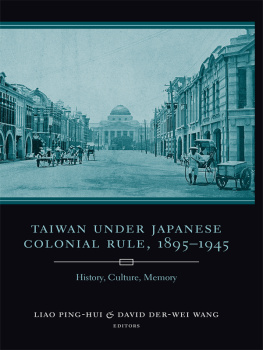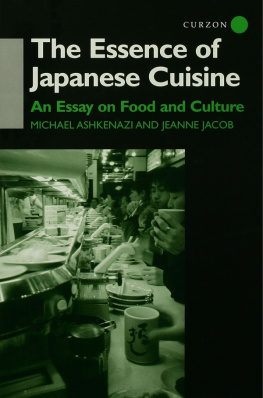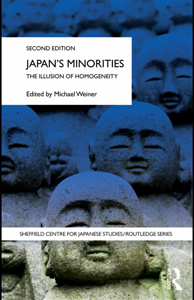Table of Contents
THE JAPANESE AND THE WAR
ASIA PERSPECTIVES
WEATHERHEAD EAST ASIAN INSTITUTE, COLUMBIA UNIVERSITY
ASIA PERSPECTIVES: HISTORY, SOCIETY, AND CULTURE
A series of the Weatherhead East Asian Institute, Columbia University
Carol Gluck, Editor
Comfort Women: Sexual Slavery in the Japanese Military During World War II, by Yoshimi Yoshiaki, trans. Suzanne OBrien
The World Turned Upside Down: Medieval Japanese Society, by Pierre Franois Souyri, trans. Kthe Roth
Yoshimasa and the Silver Pavilion: The Creation of the Soul of Japan, by Donald Keene
Geisha, Harlot, Strangler, Star: The Story of a Woman, Sex, and Moral Values in Modern Japan, by William Johnston
Lhasa: Streets with Memories, by Robert Barnett
Frog in the Well: Portraits of Japan by Watanabe Kazan, 17931841, by Donald Keene
The Modern Murasaki: Writing by Women of Meiji Japan, ed. and trans. Rebecca L. Copeland and Melek Ortabasi
So Lovely a Country Will Never Perish: Wartime Diaries of Japanese Writers, by Donald Keene
Sayonara Amerika, Sayonara Nippon: A Geopolitical Prehistory of J-Pop, by Michael K. Bourdaghs
The Winter Sun Shines In: A Life of Masaoka Shiki, by Donald Keene
Manchu Princess, Japanese Spy: The Story of Kawashima Yoshiko, the Cross-Dressing Spy Who Commanded Her Own Army, by Phyllis Birnbaum
Imitation and Creativity in Japanese Arts: From Kishida Rysei to Miyazaki Hayao, by Michael Lucken, trans. Francesca Simkin
The First Modern Japanese: The Life of Ishikawa Takuboku, by Donald Keene
THE JAPANESE AND THE WAR
From Expectation to Memory
MICHAEL LUCKEN
TRANSLATED BY KAREN GRIMWADE
Columbia University Press
New York
Cet ouvrage a bnfici du soutien des Programmes d'aide la publication de lInstitut Franais.
This work, published as part of a program of aid for publication, received support from the Institut Franais.
Columbia University Press
Publishers Since 1893
New York Chichester, West Sussex
cup.columbia.edu
Copyright 2013 Librairie Arthme Fayard
Translation copyright 2017 Columbia University Press
All rights reserved
E-ISBN 978-0-231-54398-9
Library of Congress Cataloging-in-Publication Data
Names: Lucken, Michael, author. | Grimwade, Karen, translator.
Title: The Japanese and the war: from expectation to memory / Michael Lucken; translated by Karen Grimwade.
Other titles: Japonais et la guerre. English | Japanese and World War 2 | Japanese and World War Two
Description: New York: Columbia University Press, [2017] | Series: Asia Perspectives: History, Society, and Culture | Includes bibliographical references and index.
Identifiers: LCCN 2016024793 (print) | LCCN 2016029722 (ebook) | ISBN 9780231177023 (cloth: alk. paper) | ISBN 9780231543989 (electronic)
Subjects: LCSH: World War, 1939-1945JapanHistoriography. | Collective memoryJapanHistory20th century. | MemorySocial aspectsJapanHistory20th century. | World War, 1939-1945Influence. | War and societyJapanHistory20th century. | JapanSocial conditions20th century. | JapanIntellectual life20th century.
Classification: LCC D743.42 .L8313 2017 (print) | LCC D743.42 (ebook) | DDC 940.53/52dc23
LC record available at https://lccn.loc.gov/2016024793
A Columbia University Press E-book.
CUP would be pleased to hear about your reading experience with this e-book at .
Cover design: Rebecca Lown
Cover image: Sadamasa Motonaga, Unititled, 1959. Oil on panel, 35-7/8 28-3/4 inches (91 73 cm). [ The Estate of Sadamasa Motonaga; Courtesy of Fergus McCaffrey, New York/St. Barth]
CONTENTS
T he author would like to express his sincere thanks to Fabrice dAlmeida and Pascal Griolet for their careful editing of this book, and to Michel Vi for his encouragement, comments, and corrections.
J apanese, Korean, and Chinese names are given in the order family name followed by given namefor example, Kurosawa Akira.
T he year 1945 marked a watershed in Japan that saw unprecedented change in its history and geography. Its cities had been laid to waste by bombs, its armies, defeated on all fronts; its national territory was occupied by a foreign power for the first time, the economy, in tatters, and the empire, deprived of its recently acquired colonies. Millions of families had been plunged into mourning and rare were those who had escaped some kind of physical or material loss. Yet despite these historic changes the imperial institution managed to survive. Against all expectations, Emperor Shwaor Hirohito as he is generally known outside Japanmanaged to preserve the existence of the throne. This explains why there was no need to abolish the constitution entirely, although in practice it was completely rewritten. An aura of mystery surrounds Japans millennia-old imperial institution, and its preservation after the trauma of the Last Great War, as it is known in Japanese, has merely heightened this. The figure of the emperor is a key to understanding Japan at war.
Saving the imperial institution was the overriding objective of the Japanese government during the closing months of the war. In military terms, the war had been lost since 1943; however, the government hoped for a compromise that would allow the country to retain its independence and political structures. Hundreds of thousands of soldiers and civilians died to keep this hope alive. Of course, this is not what was said to the Japanese people, who were constantly told that the decisive battle, the one that would bring victory to the country, was yet to come. Not everyone was fooled.
In the spring of 1945, Kurosawa Akira was not yet a world-renowned filmmaker. Having launched his career in 1943, he had already completed three films and was one of the national propaganda machines most promising directors. Indeed, only filmmakers in whom the authorities had full confidence were still allowed to work at a time when the entire nations resources were being channeled into the war effort. During the final weeks of the war, Kurosawa wrote a screenplay that took a sixteenth-century battle as its backdrop. However, the film required substantial resourcesnotably horses for the battle scenesand their unavailability forced Kurosawa to abandon his project. He then turned his attention to the theater repertoire and a famous play known in English as The Subscription List. The films modest scale meant that Kurosawa received authorization to begin shooting. He completed his film in September, after the Americans had arrived, making this one of the rare productions to have straddled both the war and the occupation.
The films story follows the fugitive and great warrior Yoshitsune as he flees his brother, the shogun. Yoshitsune is accompanied on his journey by a clutch of loyal retainers, including the trusty Benkei. In order to evade capture they disguise themselves as Buddhist monks, with Yoshitsune dressed as a servant. Despite their efforts, the group arouses suspicion and is subjected to an interrogation. During a scene that provides the films dramatic climax, Benkei manages to trick his adversaries by answering their questions perfectly. However, no sooner are the bogus monks set free than suspicions over the servants true identity see them recaptured. In order to prove that the servant is not the great Yoshitsune himself, Benkei gives him a public beating, a ruse that enables the group to escape. The film closes with a pitifully comical scene in which Benkei tearfully begs his masters forgiveness for having humiliated him to save his life.











